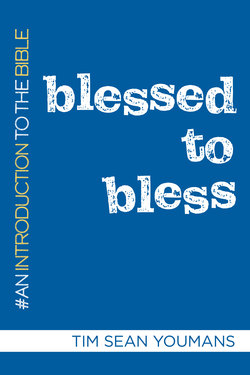Читать книгу Blessed to Bless - Tim Sean Youmans - Страница 23
ОглавлениеAbram and Sarai’s Undulating Faith
Look again at Genesis 12–13, then continue, reading chapters 14, 15, and 16.
Most folks think the scriptures are a collection of stories that each have a useful moral lesson about how to be a better person. Sometimes that is true, but more often the collection of stories are better understood as a whole. This is particularly true with Genesis. As I’ve pointed out earlier, Genesis is divided into two sections:
Genesis 1–11: The Creation and origin stories
Genesis 12–50: Abraham and Sarah and their descendants
The real thesis of Genesis is found in how these two sections are related. The first section presents the problem, and section two begins the resolution. If you want to review, take a few minutes and again watch The Bible Project video about Genesis 1–11.
We will be reading stories about Abraham and his brood in what will be an ever-expanding tribe. Located within those stories is the Vision Quest given to Abram and Sarai: to create a culture that will bless all the nations of the earth, and in that blessing repair the brokenness described in the origin stories.
Sometimes this quest will be messy. It is often a two-steps-forward-three-steps-back kind of existence. You saw this immediately in chapter 12 right after their initial call, as Abram and Sarai set off for Egypt and Abram lies about Sarai. You will read it again when Sarai gives up trying to conceive a baby and starts to think the way this culture will come into being is through one of her female slaves. This was not an uncommon practice at the time. Abram conceives a child with one of Sarai’s slaves, an Egyptian woman named Hagar. In that culture, the child would legally be Abram’s and Sarai’s baby. It causes all kinds of jealousy, and Sarai ends up trying to cast out the slave and her baby Ishmael. God intervenes and sends them back home.
A couple of notes of importance: Abram and his nephew must part ways because there isn’t enough grazing land for all of their sheep. Lot chooses to go west of the Jordan River and settles south of the Dead Sea in the cities of Sodom and Gomorrah. Not too long after this Abram must go rescue Lot from some warring tribes.
Sodom and Gomorrah. The cities that Abram’s nephew Lot moved to when they parted ways. God destroyed these cities for their inhospitality and wickedness. The term is used now to refer to a wicked place.
The king that Abram meets in Genesis 13 is a significant archetype. He was a king and priest from Salem (later what would become Jeru-Salem) named Melchizedek. He gives Abram a gift of bread and wine, and Abram gives him a gift, a tithe of his goods (or 10 percent of his profit). Though this occurs some two thousand years before the appearance of Jesus, Christians view Melchizedek as a prefiguring or allusion to the future Jesus. The hint is the bringing of bread and wine and that Abram gives him the same gift one would give God. Jump ahead and take a look at Hebrews 7 in the New Testament.
Questions for Reflection or Discussion
1. Do you ever find yourself making the same mistakes over and over again? What are they? Who gets the most frustrated with you regarding these mistakes?
2. How do you think God feels about Abram and Sarai’s up-and-down trust in this adventure God has sent them on?
3. Do you think Melchizedek is a “pre-appearance” of Jesus or a mysterious king that has some symbols in common with Jesus? How so?
